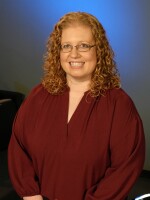An experiment from students at Greater Nanticoke Area High School will soon reach new heights — and could provide insight into conditions on Mars.
NASA selected the Luzerne County juniors as one of 60 winning teams from across the country in the TechRise Student Challenge. This summer, a flight box containing the group’s soil experiment will soar on a NASA-sponsored flight test on a high-altitude balloon.
Liam McGovern said he “jumped for joy” when he and fellow engineering club members learned that NASA selected their proposal.
“Our experiment from Nanticoke, a town that probably not a lot of people have actually really heard of, It's been chosen for the entire state,” he said. “Now we get to do something that’s just really interesting. It could help us a lot with going to Mars.”
The students will take soil samples from several places across the United States — fertile soil from the Midwest, desert soil of the Southwest and volcanic soil from Hawaii — and place them in the flight box. Several monitors will help track conditions.
The box will be one of 60 in the NASA challenge that will rise to an altitude of about 70,000 feet and stay there for about four hours.
With an expected temperature of 75 degrees below zero, low atmospheric pressure and high levels of radiation, the conditions will be similar to the surface of Mars, the students said.
“We really feel as if this could potentially solve our question as to if we could really grow plants on Mars,” Liam said.
The experiment will take flight in June or July, and the box — and the data it recorded — will be returned to the students for the beginning of their senior year, explained teacher Anthony Fleury.
They will measure levels of mycobacteria, checking to see if the organic materials survived the flight and whether a plant can grow.
“I want to see the data out of this experiment. I just want to know that all this studying and hard work that we did is for something,” Robert Miller said. “We found out we won, and that's incredible. But I want to learn the beginning and basics of STEM and then take that further in my future, because I want to become an engineer, and I think this is a great step to that.”
Winning teams each received $1,500 to build out their experiments and technical support from professional engineers throughout the process. NASA chose the 60 winners from more than 720 proposals.
On a recent Friday afternoon, most Greater Nanticoke students had already left to start their weekends. The engineering club sat in Fleury’s classroom, watching a video from NASA on how to solder wires. The five students — McGovern, Miller, David Meck, Alexandra Skillens and Jeremiah Montalvo — meet after school regularly to work on the project.
“So many students graduate high school having little experience with tools and using tools, even if it's something as simple as a screwdriver or more complex like a soldering iron,” Fleury said. “We are getting experience with all of those areas of STEM, and I think the group is pretty excited.”













